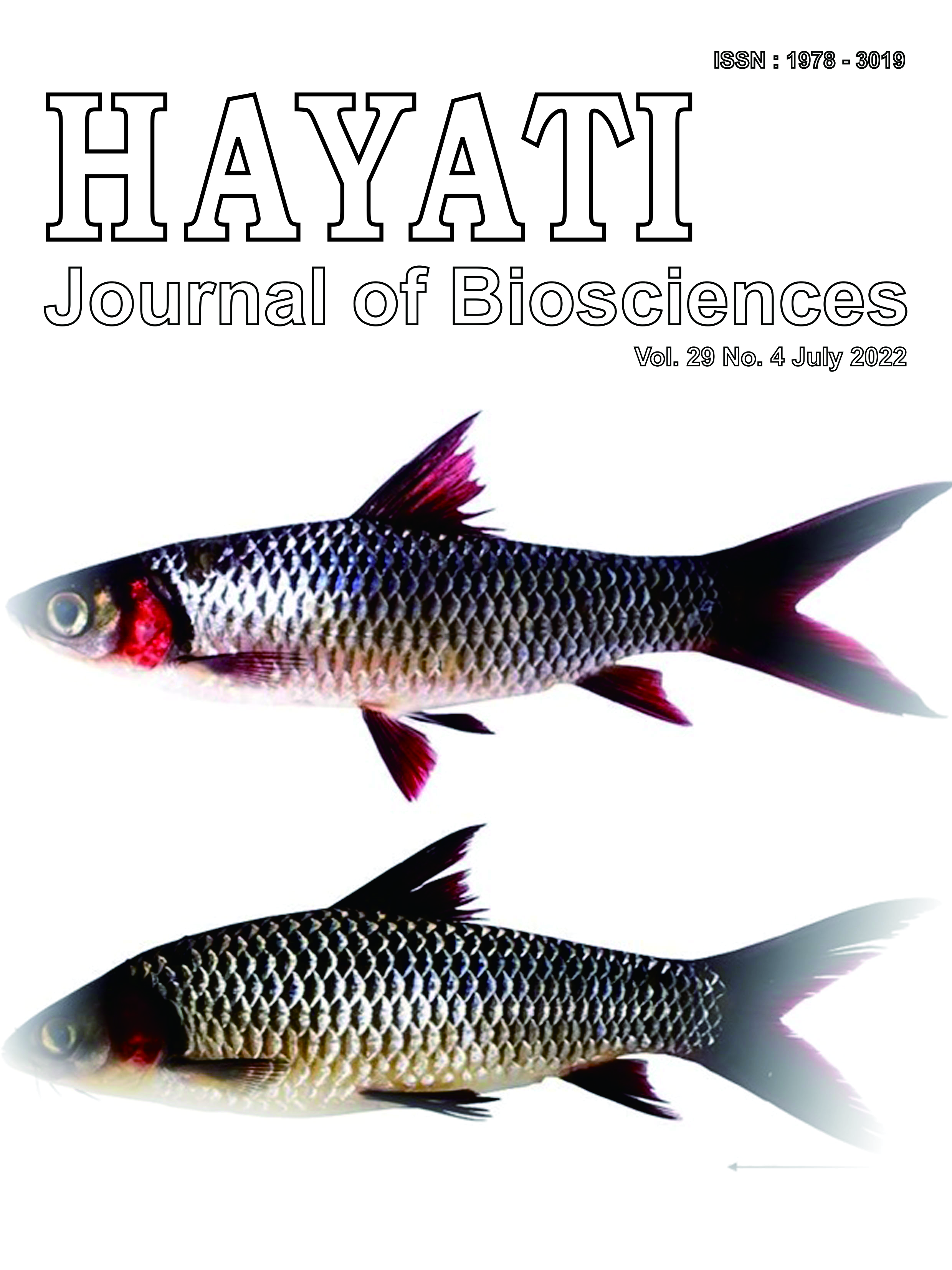Correlation of Heavy Metals Cd, Cr, Cu, Hg, Pb, and Zn with Intestinal Bacteria in Anas platyrhynchos L. Duck
Abstract
Intestinal bacterial species play an essential role in the duck body metabolism and productivity. They are affected by various factors, such as heavy metal contamination. This research aims to study metal emission levels and their correlation with the composition of intestinal bacteria. A total of twenty-five duck samples (Anas platyrhynchos L.) were obtained from Semarang, Temanggung, Magelang, Pati, and Salatiga. Five g of intestinal substances were employed in the isolation 16S rRNA gene V3-V4 region. Data sequence in fastqc format was then analyzed using QIIME. Also, the heavy metals in water, feed, and meat samples were analyzed using inductively coupled plasm-optical emission spectroscopy (ICP-OES). The highest heavy metal contaminant was Hg, with a total concentration reaching 5.55±1.79 ppm of input and 4.42±0.80 ppm in meat. The bacterial composition comprises the four highest phyla, sequentially including Firmicutes, Actinobacteria, Proteobacteria, and Bacteriodetes. The relationship between heavy metals and intestinal bacteria shows a significant value with a coefficient of >0.90. Therefore, there was a correlation between heavy metals and intestinal bacteria composition, suggesting that bacteria are likely to protect ducks from the adverse effects of heavy metals in water and feed.
Downloads
Copyright (c) 2022 R Susanti, Ari Yuniastuti, Muchamad Dafip, Fidia Fibriana

This work is licensed under a Creative Commons Attribution-NonCommercial 4.0 International License.
HAYATI J Biosci is an open access journal and the article's license is CC-BY-NC. This license lets others distribute, remix, tweak, and build upon author's work, as long as they credit the original creation. Authors retain copyright and grant the journal/publisher non exclusive publishing rights with the work simultaneously licensed under a https://creativecommons.org/

























.png) IPB University
IPB University Department of Biology
Department of Biology The Indonesian Biological Society
The Indonesian Biological Society 

